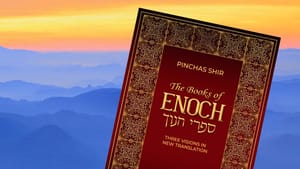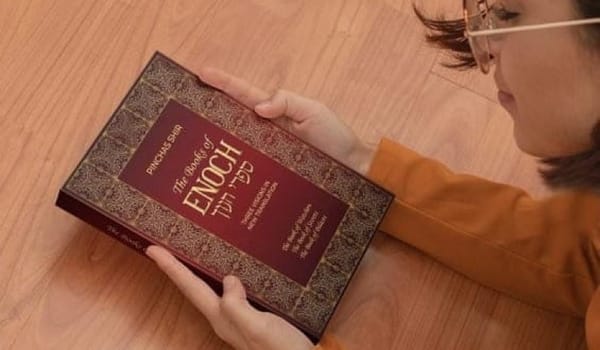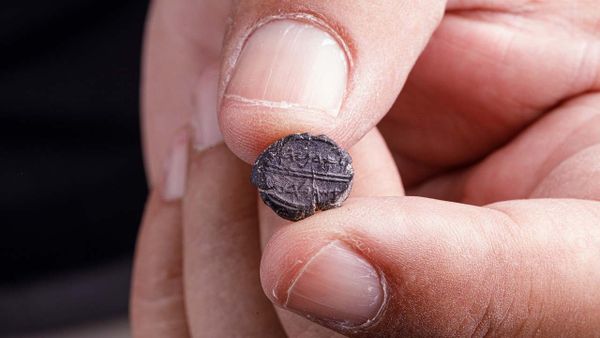In this day and age, most Christian readers are aware that the "New Testament" is a Jewish composition. Yet because these writings have been read as anything but Jewish documents for so many generations now learning how to re-read them in a more natural way is a slow process for many. There is a new book called
"Jewish Perspectives on the New Testament" that I believe can help. The book takes deliberate steps in illustrating how such re-reading can be done. Here is an excerpt from the book...

Semitic Logic
The authors of the New Testament wrote in Greek but reasoned and thought in their native Hebrew. Some scholars believe that Luke was a Jew based on an analysis of his writing style, use of Hebrew idioms, and Semitic reasoning. Semitic people love analogy and use it very often. For them, analogy is one of the methods of logical and legal proof. In the Bible, analogy brings together individual events or sentences that would remain separate in all other modes of thinking. Jesus often used analogy in the form of a parable, and God the Father used analogy to interact with people. In the Jewish mind, descriptions of the miracle are often crafted in this form.
In Jewish reasoning, the analogy is similar to a stack of sheets of translucent paper. It is obvious that the entire stack is made up of separate layers, and that the top layer is not the same as the bottom. On the other hand, they all form a pattern that is accepted as a complete unit. In the Letter to Hebrews, the author argued for five such layers (3:7-4:11). Alfred Edersheim in 1883, was the first who described this type of reasoning to English-speaking Christians.
Gezera Shava
Gezera shava is another kind of Semitic logic which is even more challenging than kal vachomer and also unfamiliar to most believers. The rule is sometimes applied to two texts, descriptions, or events that are considered to be in agreement if they have at least one common word. Preferably, it should be a keyword offering the analogy. The repetition of a specific term in another context is an indication for a possibility of a comparison. In European/Western reasoning, analogies are built on a much more stringent connection. Naturally, it is necessary to identify this word and define the intent of the author. After all, there should be some restrictions in the use of gezera shava. One can find a perfect example in Matt. 2:17-18:
17 Then what was said through the prophet Jeremiah was fulfilled: 18 A voice is heard in Ramah, weeping and great mourning, Rachel weeping for her children and refusing to be comforted, because they are no more.
The quotation is taken from Jer. 31:15, but it must be understood in the context of Jer. 31:1, 15-17:
1 At that time, declares the Lord, I will be the God of all the clans of Israel, and they will be my people . . . 15 This is what the Lord says: A voice is heard in Ramah, mourning and great weeping, Rachel weeping for her children and refusing to be comforted, because her children are no more. 16 This is what the Lord says: Restrain your voice from weeping and your eyes from tears, for your work will be rewarded, declares the Lord. And they will return from the land of the enemy. 17 So there is hope for your future, declares the Lord, and your children will return to their own land.
Rachel is the name of the city of the Northern Kingdom which was destroyed in 722 B.C. Using gezera shava, Jeremiah mourns the Southern Kingdom, which perished in 586 B.C. Matthew adds his own events, comparing all the events that took place in different cities with different people and at different times, also applying gezera shava. In the application of this rule, the common word is “weeping,” and the goal of the rule would be accomplished by Jesus who comforts those who are in grief, and corrects everything that is wrong. Jeremiah makes use of gezera shava in his text, and in his turn, Matthew applies the same rule to the text of Jeremiah. Such a chain in Semitic logic might be considerably longer.
Knowledge of the Bible
The research on the white stone in Rev. 2:17 leads us to the Old Testament. The Lord commanded the creation of sacred garments for Aaron serving as the high priest. The breastplate was decorated with twelve precious stones representing each tribe of Israel (Ex. 28:15-29). The stone in the first row, Yahalom in Hebrew, carries the tribe’s name Zebulun or Zevulun. Matt. 4 connects us to Isa. 9.
See Matt. 4:13-14:
13 And leaving Nazareth, he went and lived in Capernaum, which was by the sea in the territory of Zebulun and Naphtali 14 to fulfill what was said through the prophet Isaiah . . .
Isa. 9:1-2: 1 But there will be no more gloom for her who was in anguish; in earlier times He treated the land of Zebulun and the land of Naphtali with contempt, but later on He shall make it glorious, by the way of the sea, on the other side of Jordan, Galilee of the Gentiles. 2 The people who walk in darkness will see a great light; those who live in a dark land, the light will shine on them.
Nazareth being the original home, and Capernaum as the base of Jesus’ ministry take place within the borders of the land assigned to the descendants of Zebulun and Naftali. The new name written on white stone belongs to Jesus, and those who receive it are His followers.












Member discussion